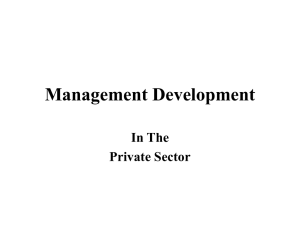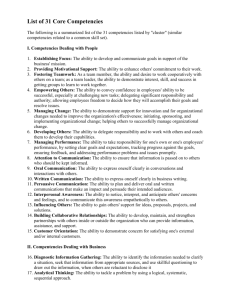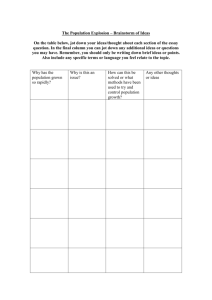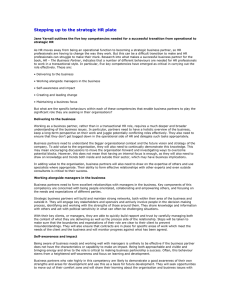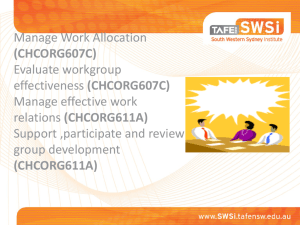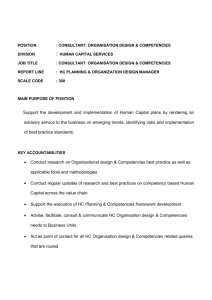Maximise own performance Powerpoint
advertisement
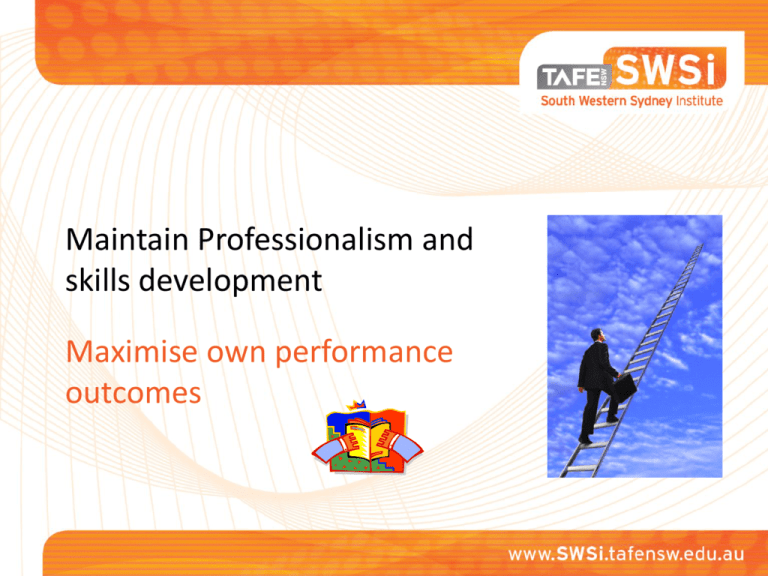
Maintain Professionalism and skills development Maximise own performance outcomes Characteristics of Leaders • Uncompromising integrity. Two parts, staying power which refers to being committed for the long-term and for the good of the organisation and Getting outside of yourself which is a willingness to help someone else even when there is nothing tangible to expect from it Characteristics cont’d • High energy. Includes a clear sense of direction ,an ability to discern between what is intersting and what is important and avoid getting involved in petty issues. • Good at working priorities. A good leader is good at both setting priorities and actioning them. • Courageous. Not afraid to tackle new challenges, to push the boundaries of thinking and practice and to take risks Characteristics cont’d • Committed and dedicated hard worker. Demonstrate a passion for their work • Unorthodox and creative. A innovator and encourages colleagues creativity and unorthodox approaches. • Goal Orientation to make tough decisions • Inspired and contagious enthusiasm • Staying level –headed. Consistently demonstrate common sense and confidently with situations. • Desire to help others grow and succeed ( Cox 2002) Strategies • Provide a vision. Is this information readily available? • Provide staff with relevant information. Make sure that your staff are provided with sufficient information, regardless of task, to make informed decisions for planning and goal setting. • Promote and model high standards. Make sure you communicate clearly about what is expected and that concrete and achievable targets are defined. Ensure your promises and undertakings to your staff are realistic and honoured. • Recognise and empower the individual. Encourage them to offer ideas, views and suggestions • Work on building team cooperation. Cooperative work practices create an environment in which the needs of all involved parties are considered and in which people feel committed to working towards decisions and actions fostering the success and achievement of the group. Strategies cont’d • Work on building team cooperation. Cooperative work practices create an environment in which the needs of all involved parties are considered and in which people feel committed to working towards decisions and actions fostering the success and achievement of the group. • Establish routines. People need to have a sense they are working with the support of others and knowing there will be routine opportunities to debrief, discuss ,input ,feedback and plan. • Provide opportunities to develop new skills. Encouraging people to develop new skills, try new tasks and develop a practical understanding of the range of roles carried out in the organisation will enhance the workplace • Encourage and provide honest feedback. It provides us with the information we need to make positive and constructive changes to the environment and to our behaviour Professional Development Professional development should occur within a range of contexts ,such as • The organisations’ strategic direction • Your role within the organisation ( as described in the job description) • Industry standards and competencies • Industry trends • Agency guidelines • Current and future needs Strategies • Regularly review your skills and development needs and select appropriate learning and development activities • Focus on maintaining and building upon your current competencies – whether or not you intend seeking promotion, greater responsibility professional recognition through membership of an institution or a professional qualification. • Draw up a career plan that will help you develop various pathways that are open to you now and help you recognise options open to you as they emerge • Think about your goals and objectives – both work based and personal. • Identify the skills you will need now and those you need to develop for the future. • Jot down the things you want to achieve next year ( short – term ), in 2 – 5 years ( medium term) and in ten years ( long – term) Strategies • Starting with your short –term list, think about what actual things you will need to achieve those goals. It might be that you need to learn new skills, gain experience of a different role, take on more responsibility etc • Prioritize. Look at your list and consider which things need to be done before you can start on others, or which items are more important or time –bound. Establish some time frames. Strategies • Set objectives. Look at the first 3 or 4 items on your list and turn them into SMART objectives. • Make a plan and commit it to paper. Finish by setting a date when you will review your plan and put it in your diary • Consider the best ways to achieve your goals. Do they require formal learning, will you need to access learning materials (eg books or cd’s ), will you need to relay on someone else to help you? • Keep a log on your learning. Jot down things that you learn Strategies • Decide which competencies and workplace/industry standards each piece of your learning is linked to. • When thinking about your learning plan consider - when and how you learn best - the type of activities that will be most effective for you - the financial and time resource implications of your plan -whether or not your employer is supportive of your development Industry Trends – current and future needs • Relevant qualifications – an expectation of and he existence of qualifications specific to industry • A defined career path – the development of many industries to involve a defined career structure rather than acting as a revolving door to somewhere better • Increasing privatisation • Contracting out services traditional provided by the public sector e.g. employment services , out of home care • Competitive tendering • Structure – the re shaping of the community services industry along market lines Industry Trends – current and future needs • • • • • • • Increased uncertainty of funding – tied to government i.e. who is in power, what their policies are in relation to the industry, general perception of key issues to be addressed and key policy areas Financial literacy – an increasing expectation of organisations being able to manage finances and report accurately The growth of fee –for – service within the non government sector An increase in non-government sector and “for profit” sector Policy of de-institutionalism A growth in sub – industries Ageing population Reading http://www.ncoss.org.au/content/bl ogsection/1/111/




